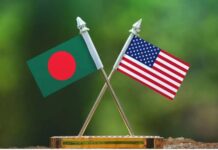By Diya Nag

Despite some tentative new signs that point to improved relations and potential for trade between South Asia’s biggest economies – India and Pakistan – the region remains poorly integrated economically, with intraregional trade dreadfully low, hovering at less than 5 percent of total trade. This is attributable to several key factors including protectionist trade regimes, weak connectivity, poor infrastructure, low levels of cross-border investment, the presence of non-tariff barriers, and of course the ongoing tensions between India and Pakistan.
A new poll of Indian public opinion, conducted by the Australian think-tank Lowy Institute for International Policy and the Australia India Institute, reveals that while Indians do want increased trade in the region, this may not necessarily include trade with Pakistan. The poll shows that 71 percent of Indians agree that India and its South Asian neighbors would benefit from free trade, and that this would make the region more peaceful. However, the data indicates that 94 percent of people in India regard Pakistan as a threat to national security, and a large majority (84 percent) considers the Indo-Pak relationship to be very weak.
Recently, there have been signs of improvement in this relationship. Last week, Pakistan’s trade minister announced that they may soon grant most favored nation (MFN) status to India. Though this is not confirmed yet, it would give India the same rights and privileges afforded by all its other trading partners. In September 2012, a new visa agreement was signed between the two countries to facilitate cross-border travel. Further, in the past year, India’s exports to Pakistan have increased by almost 15 percent, while imports from Pakistan have risen about 30 percent. Now is the time to build upon this recent momentum and rally for a boost in Indo-Pak trade.
Although both countries have a historical trust deficit and their relationship continues to be complicated, successful and mutually beneficial trade between India and Pakistan is an indispensable component of increased intraregional trade. According to the Consumer Unity Trust Society (CUTS) International, India has the potential to gain about $80 million in cheaper imports from Pakistan in about 13 categories of products. Even more notably, Pakistan stands to gain about $1.4 billion in about nine categories.
An improvement in Indo-Pak economic relations requires the building of political will to overcome historical tensions and mistrust between the two nations. It also requires including relevant stakeholders such as business owners and civil society in the conversation on regional trade. A common complaint is that there are many non-tariff barriers (NTBs) that have been hindering trade between India and Pakistan, and at the regional level. NTBs are barriers to trade other than traditional tariff barriers, such as visa restrictions or bureaucratic corruption, for example. The presence of NTBs is widely acknowledged throughout South Asia and contributes to the low percentage of intraregional trade. A study conducted by CUTS International and supported by The Asia Foundation shows that South Asian consumers are foregoing nearly $3 billion a year of aggregate minimum consumer welfare due to the presence of NTBs. This is over and above the $2 billion each year that consumers are losing out on from tariffs being imposed on their neighbors on selected product categories. These tariff and non-tariff barriers make the cost of trading with neighbors much more costly than they would otherwise be, to the extent that trading with partners outside the region is often far more cost-effective. And, the consumer is losing out.
Along with our partner organizations from Bangladesh, Nepal, Pakistan, and Sri Lanka, The Asia Foundation has identified some broad measures that, if taken, would reduce or remove these barriers to a large extent. These include: raising awareness and transparency of procedures, achieving new reforms to address legal and administrative hurdles, and regional harmonization of standards and clearance documents.
Ultimately, it is the people of South Asia who are bearing the brunt of the cost of economic non-cooperation in the region, and this must change in order for the region to grow economically and reduce poverty. On a positive note, the Lowy poll also found that 89 percent of Indians agree that ordinary people in both India and Pakistan want peace, and 72 percent identify trade and economic cooperation as a way to help bring about peace with Pakistan.
Diya Nag is a program officer in The Asia Foundation’s India office. She can be reached at dnag@asiafound.org. The views and opinions expressed here are those of the individual author and not those of The Asia Foundation.
Source: Asia Foundation









